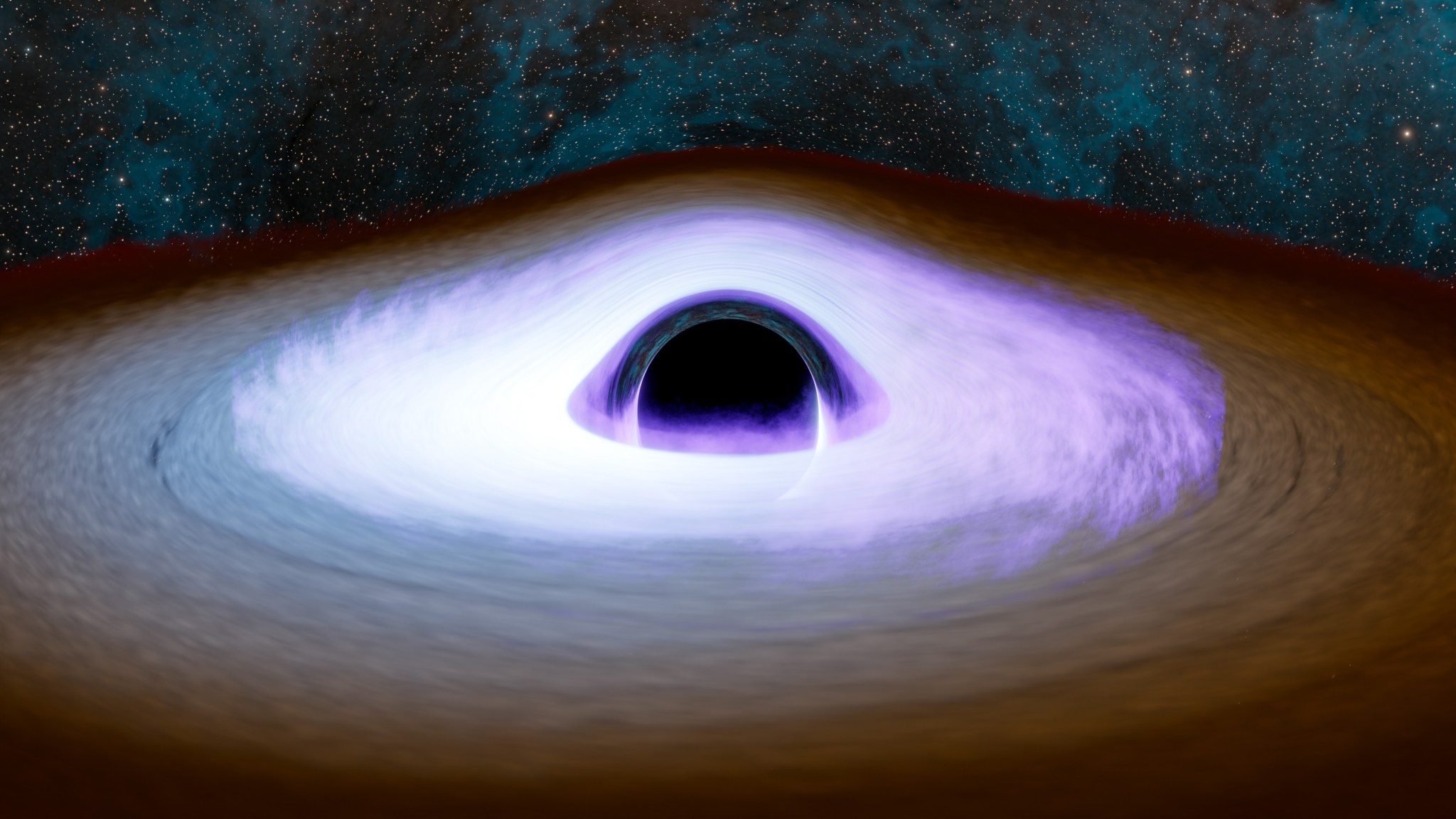4 min read
Written by Michael Allen
An international team of astronomers using NASA's IXPE (Imaging X-ray Polarimetry Explorer), has challenged our understanding of what happens to matter in the direct vicinity of a black hole.
With IXPE, astronomers can study incoming X-rays and measure the polarization, a property of light that describes the direction of its electric field.
The polarization degree is a measurement of how aligned those vibrations are to each other. Scientists can use a black hole's polarization degree to determine the location of the corona - a region of extremely hot, magnetized plasma that surrounds a black hole - and how it generates X-rays.

In April, astronomers used IXPE to measure a 9.1% polarization degree for black hole IGR J17091-3624, much higher than they expected based on theoretical models.
"The black hole IGR J17091-3624 is an extraordinary source which dims and brightens with the likeness of a heartbeat, and NASA's IXPE allowed us to measure this unique source in a brand-new way." said Melissa Ewing, the lead of the study based at Newcastle University in Newcastle upon Tyne, England.
In X-ray binary systems, an extremely dense object, like a black hole, pulls matter from a nearby source, most often a neighboring star. This matter can begin to swirl around, flattening into a rotating structure known as an accretion disc.
The corona, which lies in the inner region of this accretion disc, can reach extreme temperatures up to 1.8 billion degrees Fahrenheit and radiate very luminous X-rays. These ultra-hot coronas are responsible for some of the brightest X-ray sources in the sky.
Despite how bright the corona is in IGRJ17091-364, at some 28,000 light-years from Earth, it remains far too small and distant for astronomers to capture an image of it.
"Typically, a high polarization degree corresponds with a very edge-on view of the corona. The corona would have to be perfectly shaped and viewed at just the right angle to achieve such a measurement," said Giorgio Matt, professor at the University of Roma Tre in Italy and a co-author on this paper. "The dimming pattern has yet to be explained by scientists and could hold the keys to understanding this category of black holes."
The stellar companion of this black hole isn't bright enough for astronomers to directly estimate the system's viewing angle, but the unusual changes in brightness observed by IXPE suggest that the edge of the accretion disk was directly facing Earth.
The researchers explored different avenues to explain the high polarization degree.
In one model, astronomers included a "wind" of matter lifted from the accretion disc and launched away from the system, a rarely seen phenomenon. If X-rays from the corona were to meet this matter on their way to IXPE, Compton scattering would occur, leading to these measurements.
Fast Facts
- Polarization measurements from IXPE carry information about the orientation and alignment of emitted X-ray light waves. The high the degree of polarization, the more the X-ray waves are traveling in sync.
- Most polarization in the corona come from a process known as Compton scattering, where light from the accretion disc bounces off the hot plasma of the corona, gaining energy and aligning to vibrate in the same direction.
"These winds are one of the most critical missing pieces to understand the growth of all types of black holes," said Maxime Parra, who led the observation and works on this topic at Ehime University in Matsuyama, Japan. "Astronomers could expect future observations to yield even more surprising polarization degree measurements."
Another model assumed the plasma in the corona could exhibit a very fast outflow. If the plasma were to be streaming outwards at speeds as high as 20% the speed of light, or roughly 124 million miles per hour, relativistic effects could boost the observed polarization.
In both cases, the simulations could recreate the observed polarization without a very specific edge-on view. Researchers will continue to model and test their predictions to better understand the high polarization degree for future research efforts.
More about IXPE
IXPE, which continues to provide unprecedented data enabling groundbreaking discoveries about celestial objects across the universe, is a joint NASA and Italian Space Agency mission with partners and science collaborators in 12 countries. IXPE is led by NASA's Marshall Space Flight Center in Huntsville, Alabama. BAE Systems, Inc., headquartered in Falls Church, Virginia, manages spacecraft operations together with the University of Colorado's Laboratory for Atmospheric and Space Physics in Boulder.






